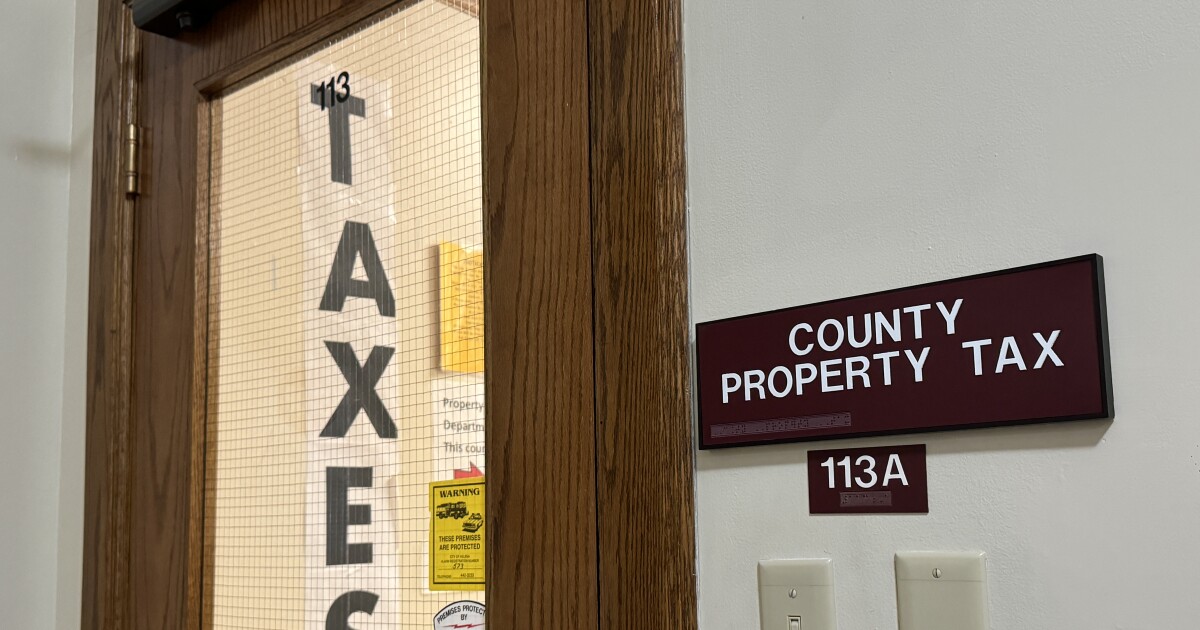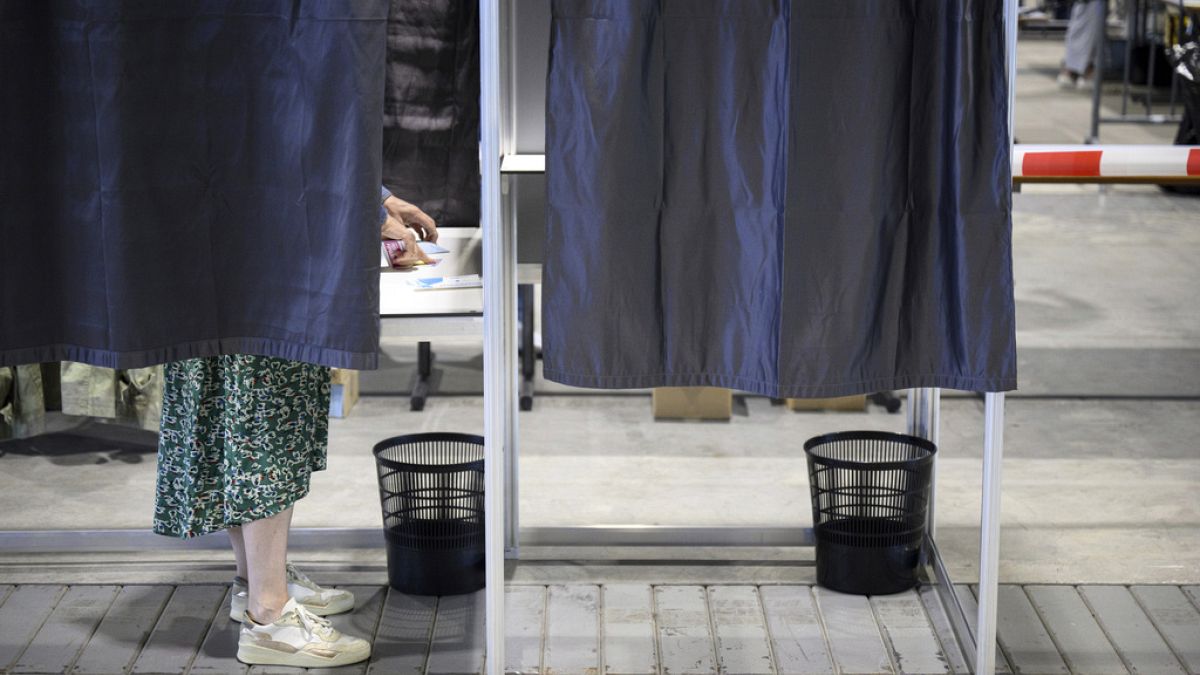Montana
Democratic lawmakers request special session in an effort to lower Montana property taxes

BILLINGS — In a Thursday letter to Governor Greg Gianforte (R), Democratic state senators requested a one-day special session, proposing a bill that could bring down estimated property taxes. Those estimates shocked many across the state.
Montana property tax estimates were sent out in late June, stunning residents.
“When I initially bought my home, I thought it was reasonable,” said Kevin Whitehead, a Billings resident, on Friday. “But 40%, that number jumps out as extremely high. And that makes my spidey senses kind of tingle.”
On Thursday, Democratic lawmakers sent the following letter to Gov. Gianforte with a special request.
MTN News
“I think the governor can, at any time, call a special session, which is why this letter came to be,” said Rep. Emma Kerr-Carpenter, D-Billings. “He can frame the call however he wants.”
The letter called for a one-day, single-bill special session as a last-ditch effort to lower property taxes.
MTN News

“The last time there was a special session, we know it was in 2017. And that was to address kind of a deeper and bigger problem,” Kerr-Carpenter said. “This is not a normal way of doing business, I’d say. But again, you know, we’re living in extraordinary times.”
Kerr-Carpenter said the Democrats prepared a bill to introduce if the governor agrees to the special session.
MTN News

“They have a two-page bill ready to go that would create a revenue-neutral property tax system,” Kerr-Carpenter said. “Basically, it would mean that our property taxes would, for this re-appraisal cycle, only go to cover our current expenses and we wouldn’t see this skyrocketing amount.”
According to the letter, a revenue-neutral property tax rate was recommended by the Montana Department of Revenue (DOR) to legislators during the 68th Montana Legislative Session, but was not adopted. The letter also states that by failing to adopt the DOR’s recommendation, the state’s share of property taxes skyrocketed.
“Property taxes were a constant conversation throughout the legislature because everybody knows it’s a problem. It’s been a problem for years,” Kerr-Carpenter said.
But Republicans say they’ve already handled the issue another way.
“We’ve already taken care of that through property tax rebates. Which the Republicans, and only two Democrats, supported,” said Sen. Greg Hertz, R-Polson. “The rebate’s that you’ll be getting this fall, that is directed only to Montana residents, will more than cover the state’s 15% share of the property tax increase. What the Democrats are proposing would benefit Montana non-resident taxpayers.”
According to Hertz, the estimates sent out might not accurately reflect what your property taxes will be.
“What you have to keep in mind, appraisals are used to allocate taxes. The local governments and the schools then set their budgets that requires a certain tax level. Those taxes are then allocated based on your appraisal,” Hertz said. “So appraisals don’t directly mean that your taxes are going up. In fact, your appraisal could go down, and your taxes could still go up, depending on what the schools and the local governments do with their budgets.”
MTN News
Hertz said he doesn’t see the governor agreeing to this request.
“I think he’s clear that he’s not calling the special session,” Hertz said. “We need to focus on what’s going on at your local government and your schools. 85% of your property taxes go to local governments and schools. So Montana taxpayers concerned about the property taxes need to start attending budget meetings in the next few months.”
A response from Gov. Gianforte’s office makes a special session seem unlikely.
“Knowing that Montanans’ property taxes are too high, Governor Gianforte and Republican legislators came into the legislative session with a plan to rein in property taxes and provide hardworking Montanans with property tax rebates to ease the burden,” Kaitlin Price, a spokesperson for the governor’s office, said in part in a written statement. “The governor is committed to building on recent reforms and rebates to bring down property taxes which are far too high, and he urges county commissioners and other local leaders to exercise fiscal responsibility and limit the growth of Montanans’ property taxes.”
Kelsey Merison/MTN News
For now, the sides seem far apart on yet another issue.
“The Democrats, all during the session, opposed all of the proposed property tax relief and rebates that the Republicans offered,” Hertz said. “And now they seem to want to become engaged. I think this is more about politics and less about getting things done.”
Kerr-Carpenter disagrees.
“We need to be putting Montana property owners first and Montana renters first. There’s solutions that would go and fix this for everyone. Instead, we’re only looking at short-term solutions,” Kerr-Carpenter said. “I’m not interested in that. I’m interested in the long-term.”

Montana
With No. 1 seed in hand, Montana State now looks toward FCS playoffs

Following a 34-11 victory over rival Montana to clinch the outright Big Sky Conference championship, Montana State received the No. 1 overall seed for the upcoming FCS playoffs when the bracket was announced Sunday.
The Bobcats (12-0) have a first-round bye and will host either No. 16-seed New Hampshire or Tennessee Martin in the second round on Saturday, Dec. 7.
Montana State coach Brent Vigen spoke with the media after the Selection Sunday show on ESPN, which the Bobcats and their fans gathered to watch at Worthington Arena.
For a full recap from Sunday’s event at Worthington Arena, see the video player above.
Montana
Brawl of the Wild Replay: No. 9 Montana at No. 2 Montana State

BOZEMAN — Second-ranked Montana State was seeking regular-season perfection when it welcomed rival Montana to Bobcat Stadium on Saturday, Nov. 23, 2024.
The Bobcats entered the 123rd Brawl of the Wild with an 11-0 overall record with a chance to finish 12-0 for the first time in program history and also win the outright Big Sky Conference championship.
The ninth-ranked Grizzlies, meanwhile, were 8-3 and aiming to play spoiler for Montana State while also improving their own seeding for the FCS playoffs.
Watch a condensed replay of the game between No. 2 Montana State and No. 9 Montana in the video above.
Montana
‘Yellowstone’ highlights influence behind a changing Montana

The popular “Yellowstone” TV series, set and filmed in Montana, taps into a lesser-known chapter of the state’s history: its settlement by Confederates and ex-Confederates during and after the Civil War.
I come to this story with a unique perspective. I’m a fourth-generation Montanan. I’m also a scholar of U.S. Western literary and cultural studies and left the state in my 20s to pursue a career in academia.
Then, during the pandemic, I returned to Montana for a time to lead a statewide cultural organization that connects Montana’s history and literature to its modern-day residents.
That’s why, for me, the story of the show’s protagonist, John Dutton III, who heads a wealthy-but-embattled Montana ranching family, is not just a cultural phenomenon. Rather, “Yellowstone” offers insights into the dynamics that are currently influencing a changing Montana.
Montana’s little-known legacy
One of the series’ prequels, “1883,” provides the crucial backstory for the Dutton family’s journey to Montana.
James Dutton, portrayed by Tim McGraw, was a former Confederate captain; his wife, Maggie, was a nurse for the Confederate Army. In leaving behind their war-torn lives to seek new opportunities, they mirror the historical trend that saw Confederate settlers moving West during and after the Civil War.
According to Montana historian and scholar Ken Robison, Confederate prisoners of war languishing in Union prisons were paroled to western territories like Montana. By 1864, two such parolees had discovered gold in what is still called Confederate Gulch, at the time one of the largest settlements in Montana Territory. Other settlements, such as Dixie Town and Jeff Davis Gulch, dotted the landscape. Montana’s territorial capital was briefly called Varina, named after the Confederate president’s wife.
Although there is no way to know for certain, it’s possible that during the latter half of the war, half of Montana Territory’s residents — maybe 30,000 — were pro-secession. Some had been in Confederate service; the rest shared their sentiments.
After the war, many of those Confederates stayed. By the late 1800s, Montana was home to 13 United Confederate Veterans organizations totaling 176 members. In 1916, the Montana Chapter of the Daughters of the Confederacy erected a Confederate memorial in Helena, the state capital; it stood for a century. The 1920s saw the rise of about 40 Ku Klux Klan chapters across the state to promote xenophobic policies against immigrants and racist policies against nonwhites. Today, Montana remains one of the whitest states in the U.S. — about 85% of Montanans are white; less than 1% are Black.
Recasting the ‘Lost Cause’
Numerous historical echoes surface briefly in “Yellowstone.”
In Season 2, there’s a violent confrontation involving a militia group that displays Confederate and “Don’t Tread on Me” flags. This subplot speaks to Montana’s long history as a hub for populist and anti-government movements. The Southern Poverty Law Center reports that Montana has 17 hate and anti-government groups, which include three defined as white supremacist or neo-Nazi.
This depiction of militia groups in “Yellowstone” represents the broader history of populist resistance in the American West. From the Sagebrush Rebellion of the 1970s to the Montana Freemen’s standoff with federal agents in the 1990s, Westerners have often resisted federal control over land and resources — tensions that perhaps trace back to the Confederacy’s own secession, a resistance rooted in defiance of federal authority, particularly over slavery.
After the Confederacy’s defeat, the “Lost Cause” narrative, in an attempt to preserve Southern pride, recast the South’s secession as a fight for states’ rights, and not a defense of slavery.
Those Lost Cause connections reverberate through John Dutton III’s relentless battle to preserve his family’s ranch. Fighting overwhelming political and economic pressures, Dutton remains steadfast in his determination to hold onto the land, even when it goes against his best interests.
This tenacity reflects the Lost Cause mindset — a clinging to a nostalgia-tinged, yet unattainable, past. Dutton embodies the archetype of the “aggrieved white man,” a figure central to many populist movements, who feels displaced from his former position of power in politics, work and family life.
Populist contradictions
It’s hard to discern to what degree recent changes in Montana can be attributed to “Yellowstone.” What is certain: Today’s longtime Montana residents find themselves exposed to a fresh set of political, economic and cultural forces.
Tourism and the local economy are up, due in part to the “Yellowstone” effect. But so are concerns about the rising costs of most everything, particularly houses.
These trends have been spurred, in part, by outsiders moving to Montana — newcomers who romanticize the state’s hardscrabble past and what they perceive as its current rough-hewn lifestyle.
What’s more, Montana has morphed from a purple state known for its political independence into a reliably conservative stronghold.
The drastic shift from purple to red solidified in 2020 with the election of a Republican governor after 16 years of Democratic leadership. It was further underscored by the defeat of Democratic Sen. Jon Tester by Republican Tim Sheehy in the 2024 election.
In “Yellowstone,” as Dutton is sworn in as Montana’s new Republican governor, he tells his constituents that he is “the opposite of progress” in response to changes that outside influences are bringing to the state.
Yet the politics of “Yellowstone” are “hard to pin down,” and the Duttons themselves espouse various versions of left- and right-wing populism as they simultaneously battle and embody the political and economic elite.
By the same token, Montanans resent wealthy outsiders but have given them political power by voting them into office.
Montana’s current governor, Greg Gianforte, is a tech millionaire, originally from Pennsylvania; Sheehy, similarly, is a wealthy out-of-stater.
Neither one might approve of the fictional Gov. Dutton’s proposed policy of doubling property and sales taxes for out-of-state “transplants” — though many Montanans probably would. For some, the rapid changes of the past few years have been, like life for the Dutton family, a challenge.
Randi Lynn Tanglen served as professor of English at Austin College in Texas (2008-2020), executive director of Humanities Montana (2020-2022), and is currently vice provost for faculty affairs at the University of North Dakota (2023-present). She holds degrees from Rocky Mountain College, the University of Montana and the University of Arizona.
-

 Business1 week ago
Business1 week agoColumn: Molly White's message for journalists going freelance — be ready for the pitfalls
-

 Science5 days ago
Science5 days agoTrump nominates Dr. Oz to head Medicare and Medicaid and help take on 'illness industrial complex'
-

 Politics1 week ago
Politics1 week agoTrump taps FCC member Brendan Carr to lead agency: 'Warrior for Free Speech'
-
/cdn.vox-cdn.com/uploads/chorus_asset/file/25739950/247386_Elon_Musk_Open_AI_CVirginia.jpg)
/cdn.vox-cdn.com/uploads/chorus_asset/file/25739950/247386_Elon_Musk_Open_AI_CVirginia.jpg) Technology6 days ago
Technology6 days agoInside Elon Musk’s messy breakup with OpenAI
-

 Lifestyle1 week ago
Lifestyle1 week agoSome in the U.S. farm industry are alarmed by Trump's embrace of RFK Jr. and tariffs
-

 World1 week ago
World1 week agoProtesters in Slovakia rally against Robert Fico’s populist government
-

 News7 days ago
News7 days agoThey disagree about a lot, but these singers figure out how to stay in harmony
-

 News1 week ago
News1 week agoGaetz-gate: Navigating the President-elect's most baffling Cabinet pick




















